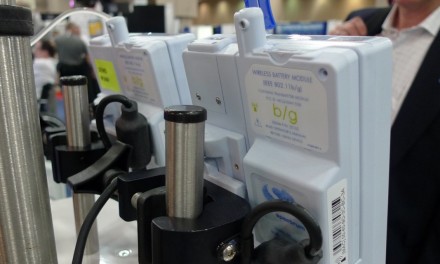While researching a project, I came across this story from 2002 in MX Magazine titled, "New Standard Accelerates Point-of-Care Device Integration". The story paints a compelling need for connectivity (emphasis mine):
within a decade, rising from $1 billion in 1998 to $3.2 billion in 2008
(Enterprise Analysis Corp., 1999, Stamford, CT). With laboratory
testing increasing only slightly over the same period, there will be a
dramatically higher percentage of POC testing information that must be
integrated into laboratory and hospital information systems.
To date, few POC test results are uploaded electronically into
those information systems. In fact, barely half of POC test results are
ultimately transmitted or entered manually to maintain complete
records, according to an EAC point-of-care testing survey. The
electronic integration of POC test information has been hampered by
multiple incompatible proprietary approaches to connecting POC devices
to networks and laboratory information systems. Yet, in the face of
dramatically higher manual data-entry requirements, something must be
done to ease the POC testing data integration problem.
The MX Magazine story goes on to describe an embarrassment of riches by way of a lengthy list of industry standards that will hasten the day of POC connectivity nirvana.
The story proposes a reason for this absence of connectivity, "In
the past, the lack of standards resulted in unreasonable costs
because each individual POC device had to be integrated with each and
every proprietary information system." To overcome this barrier, the
industry came together in 2001 and created the Connectivity Industry Consortium. The CIC did create a standard called POCT1-A (you can read a description here), and it seems that some vendors have adopted it, sort of. Here's a story in College of American Pathologists, CAP Today publication on the status of industry standards adoption in February, 2003.
It seems that over 5 years connectivity has advanced little in the POC diagnostics market. So far, most solutions are docking rstations distributed among nursing stations and connected to mostly proprietary servers on the hospitals Ethernet network - so much for, you know, "point of care". Many devices require serial connections to computers to extract data.
There is yet to be released a two way wireless POC diagnostic device that shows pending orders, patient location and demographics, and the ability to upload results immediately upon test completion. Comments I hear from caregivers about current solutions are complaints about extra steps and awkward workflows. Like medical device connectivity in general, its not about the standards, its about the workflow and usability of the system. Once that basic level of product evolution is achieved, buyers will start really looking for the multi vendor interoperability promised by standards like POCT1-A and IEEE 11073.
Pictured right is a screen shot of Nova Biomedical's Point of Care Manager blood gas data management system.



Recent Comments